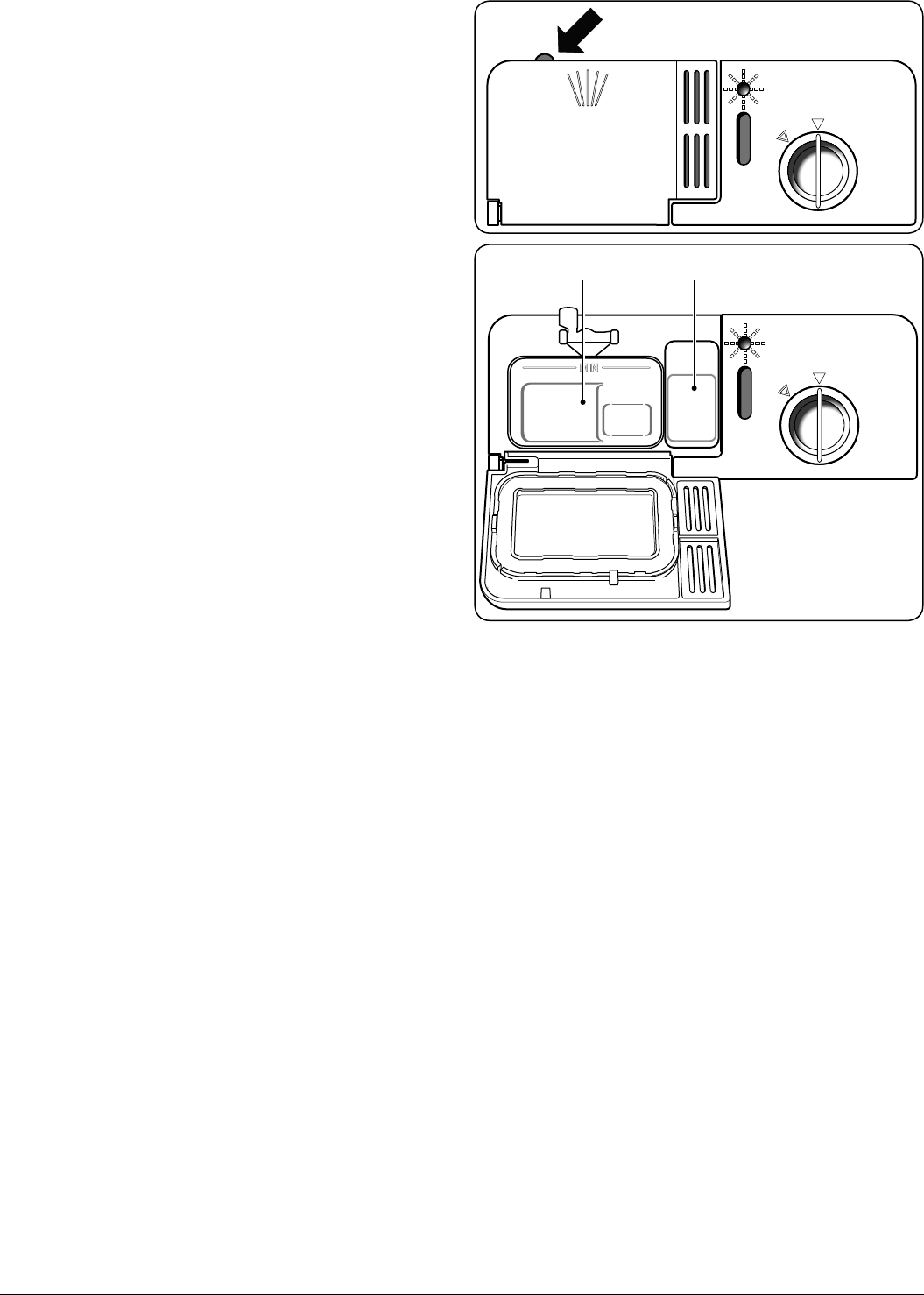
5
A B
What you should not put into the
dishwasher
Cutlery and tableware manufactured in whole or part from
wood. They become faded and unsightly in appearance.
Furthermore the adhesives that are used are not suitable for
the temperature that occurs inside the dishwasher.
Delicate decorative glassware and vases, special antiques or
irreplaceable china. The decorative patterns on such items
will not be dishwasher-proof.
Plastic objects that are not resistant to hot water, copper and
pewter utensils are also not suitable. Decorative patterns
printed or painted onto the surface of crockery, glasses, etc.,
aluminium and silver items tend to become discoloured or
faded if washed in the dishwasher.
Some types of glass can become opaque in appearance after
they have been washed many times in a dishwasher. Highly
absorbent materials, such as sponges and towels should
never be placed in the dishwasher.
IMPORTANT: Dishes or cutlery that have been soiled by
tobacco ash, wax, grease or paint, should not be put in the
dishwasher.
Damage to Glassware and Other Dishes
Possible causes
• Type of glass or manufacturing process
• Chemical composition of detergent
• Water temperature and duration of dishwasher
programme.
Suggested remedy
• Use glassware or porcelain dishes that have been
marked ‘dishwasher-proof’ by the manufacturer.
• Use a mild detergent that is described as ‘kind to dishes’.
If necessary, seek further information from detergent
manufacturers.
• Select a programme with a low temperature and a short
duration.
• To prevent damage, take glass and cutlery out of the
dishwasher as soon as possible after the programme
has ended.
Fig.2-9
Fig.2-10


















